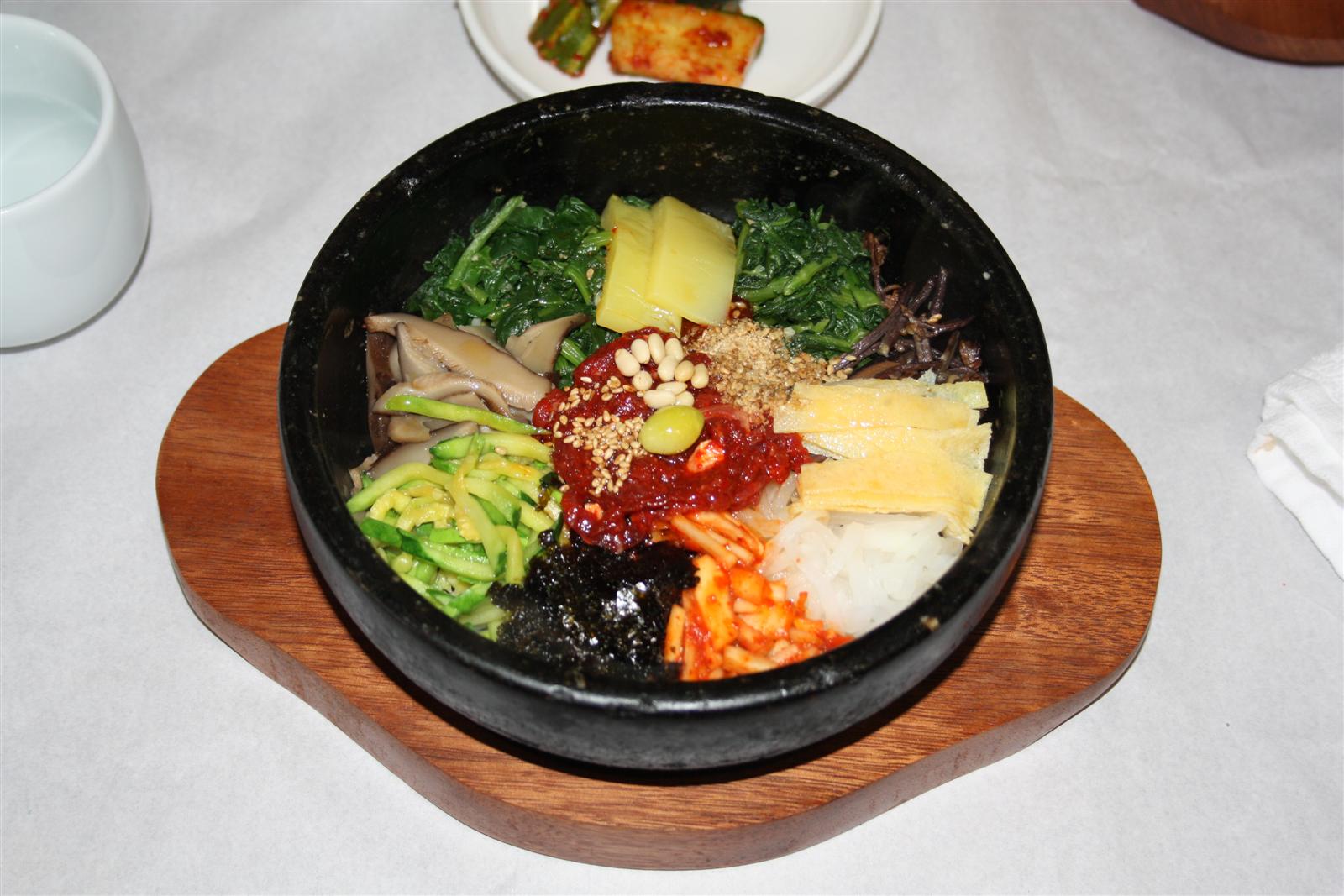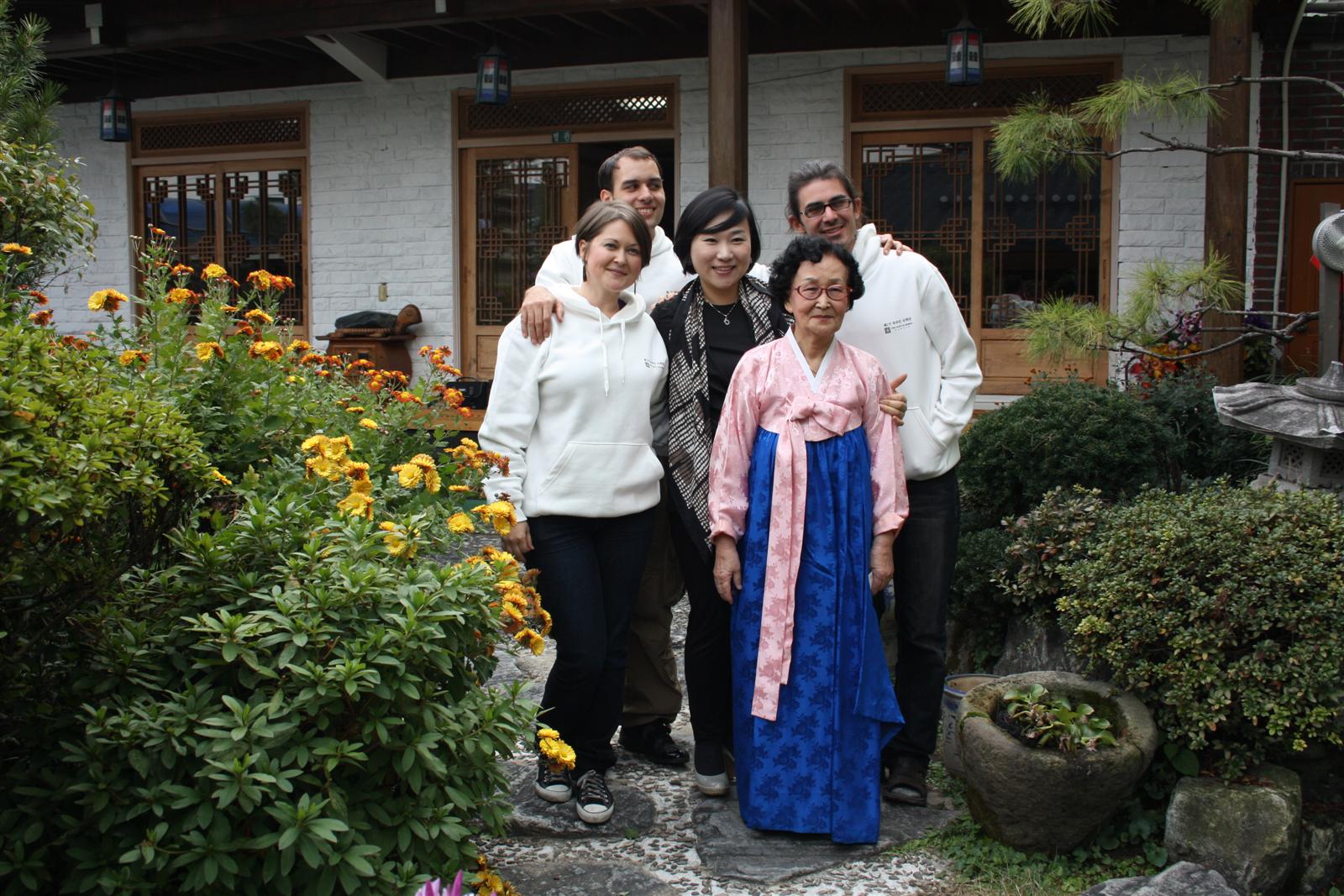In the town of Jeonju, however, bibimbap became something royal. At the Korea House restaurant in Jeonju during the first meal of our Hansik Korean Traditional Food Tour for Foreign Foodies, we met the daughter and grand-daughter of the woman who took a practical rice dish that incorporated whatever available or leftover ingredients or side dishes and made it into a timeless and beloved piece of art. As the foremost heir of this woman's legacy, her now senior daughter pridefully took me and my fellow team members through the thoughtful steps of ingredient selection, preparation and assembly. After making our way through the modern front restaurant, through the courtyard with its peaceful garden and small fish ponds, and a more ceremonial dining room, we gazed upon a vast rainbow of traditional bibimbap ingredients. Our assembly began with a gentle hand washing. So much of Korean traditional foods are hands-on dishes and bibimbap is no exception whether massaging of seasonings and ingredients or carefully laying ingredients over the top of the rice.
After first washing our hands, we were pointed to the key flavor foundations of the dish. This restaurant makes its own aged soy sauce. After being allowed a small pinky-dipped taste of the syrupy, dark liquid, all our faces changed in wonder. None of us had ever tasted a soy sauce so fine, so flavorful and full of rich umami flavor. Cheap commercial soy sauce is more like salty water than a flavor contributor. I recall foreign friends in college really craving quality soy sauce in the peak of their homesickness. But this artisinal soy sauce, along with house-made beef broth, minced garlic and fine sesame oil were key in seasoning each of the whole ingredients. I say "whole" because it is important. Whole, unprocessed ingredients are what I consider the heart of healthy eating. Chosing whole, unprocessed foods is, in my opinion, the single, most important act anyone seeking a healthy lifestyle could do. This one act automatically and positively influences a whole host of other healthy choices. But perhaps more encouraging is that bibimbap also proves that whole, quality, slow food is often supremely delicious.
With pride, my fellow members and I got to work each crafting our own bowl of beautiful, edible art. Depending on our personal preferences, dietary needs, and creative impulses we added any of the prepared ingredients to our bowls of deliberately firm-cooked rice: spinach, bean sprouts, carrot, raw beef, fern bracken, edible chrysanthemum leaves, julienned egg white and yolk, pine nuts, sesame seeds, gingko nuts, vibrant yellow mung bean jelly, shredded dried laver, bellflower root, radish, shiitake mushroom, hot pepper paste and toasted sesame oil.
I'm not sure that any dish in Korea blends tradition and contemporary as well as bibimbap. Flanked by a delicious array of house-prepared sides, we admired this dish that had first been introduced more than 200 years ago but which now satisfies fans of Korean food all over the world. But despite its historic roots and modern fame, the dish before us was also uniquely ours. Thoroughly combined into one dynamic dish, mine bowl sung the fresh flavor of extra chrysanthemum leaves. Team-member Mike's took a vegetarian route and was fragrant with rich sesame while Greg's manifested as a hearty bowl of extra spice and beef. By its very nature, the royal Jeonju version of this dish requires human touch and by that human touch it is subject to the current whim of its maker and to the availability of fresh, quality seasonal ingredients.
I feel very blessed to have had this experience at Korea House as part of our Hansik Tour. Bibimbap was my first Korean food crush and because it doesn't have a precise recipe, it frees me to customize it to my mood and the seasons and, thus, to never tire of it. If you haven't yet tried Korean food, bibimbap might just be your "gateway drug." Once you get a sense of Korean's simple approach to big, bold and sexy flavors, you might just join the world of fans in our love for this dish that never gets old.

Our teacher and daughter of the royal version creator shows us ingredient preparation.
Assembly begins while our production crew looks on.
Korea House provided us with a tasty display of the hot-pot version (which we also devoured!)
Three of our Happy Bear team members with daughter and grand-daughter of the creator.
Lovely restaurant, thank you for your hospitality!!
-Tanya
Korea House offers two choices of bimbimpap and many delicious sides with it. Please check the link in the article for directions and a map.





No comments:
Post a Comment